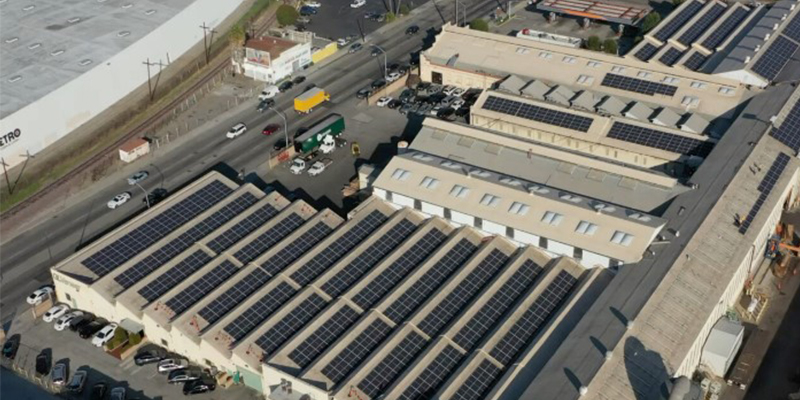California’s Title 24, the state’s energy code, has required solar for all low-rise multifamily projects since 2016, but new provisions have gone into effect this year, impacting any projects permitted since Jan. 1, 2023.
To help navigate the regulatory landscape and explain how solar and energy storage can benefit building owners and developers, Rachel McCafferty, director of business development for CalSolar Inc., shared her expertise during a NAIOP webinar on the topic.
“The solar requirement has been extended to not just multifamily projects but to all commercial and industrial new construction in California,” McCafferty explained.
Changes include:
- A mandate for photovoltaic (PV) systems and energy storage on new non-residential, including high-rise multifamily (four stories and above), buildings.
- PV systems sized to meet approximately 60% of buildings’ electricity loads, based on the conditioned floor area, climate zone and type of building.
- Electric Vehicle (EV) charging requirements including EV-capable spaces and chargers. For parking lots with more than 25 spaces, you are required to install EV chargers. For parking lots significant in size, 200 spots or more, roughly 25% of the parking spots must have EV chargers installed.
Not only is solar PV required, but battery storage will be required on all new construction, McCafferty said. She explained that the PV system requirement is calculated based on a building’s conditioned floor area and capacity factor. The capacity factor is based off building type and climate zone. So, there can be significant variability, she pointed out. The battery storage system required is based off the solar system’s size.
Owners also have the option to use the Solar Access Roof Area (SARA) formula, which calculates the solar size requirement based on total square footage available on the roof multiplied by 14 watts per square foot. “We don’t see [the SARA calculation used] a lot, especially in industrial where you have a lot of roof space,” McCafferty said, adding that you’re able to take both calculations and use the smallest of the two for building permits.
There are some exemptions to the code. For example, if the building’s roof area does not have 80 contiguous square feet of space, or if the calculated PV system size would be less than four kilowatts.
“We’re seeing cases in the state of California, especially with industrial spec development, where it is becoming more common for jurisdictions to require builders and developers to offset a certain percentage of the building load beyond what Title 24 stipulates,” McCafferty said.
The city of Fontana, California, has an ordinance that requires all buildings over 400,000 square feet to offset 100% of the building load with renewable energy – a significant requirement. The city also requires more EV charging than is currently included in the state code.
“With speculative developments, that can be challenging because you don’t know who the tenant will be,” McCafferty said.
However, there are some ways to do an early-stage analysis to get some idea of what the building department will require. With the help of energy modeling (she estimates a typical industrial warehouse uses between 2-4 kilowatt hours per square foot per year), CalSolar can determine what would be required to offset 15% of the load, or whatever is required in the jurisdiction.
An upside to these sometimes-onerous requirements is the potential for monetizing the energy transition.
“We hear our commercial and industrial developers and owners often ask, ‘How do I monetize this, especially when I’m not responsible for paying the utility bill – the tenant is?’” said McCafferty, adding that tenant billing is a way for building owners to reap the rewards of installing solar.
“Say you have a tenant that would be paying 10 cents per kilowatt hour to the utility. As the building owner, you can offer power at 9 cents per kilowatt hour, essentially a 10% discount. You as the building owner get to take that spread – 9 cents – as additional net operating income for your development.”
This can work for single-tenant or multi-tenant scenario. For multiple tenants, owners can utilize Virtual Net Metering (VNM), which allows them to install a single solar system but allocate tenant billing credit based on the consumption of each tenant meter. “This can become pretty lucrative for building owners,” McCafferty added.
McCafferty also delved into multiple financing options for solar projects, tax incentives, mitigating risk, community solar programs, and answered questions about labor issues and more during the webinar.
NAIOP members can listen to the full recording (available for 30 days) online.
Featured image courtesy CalSolar, Inc.








